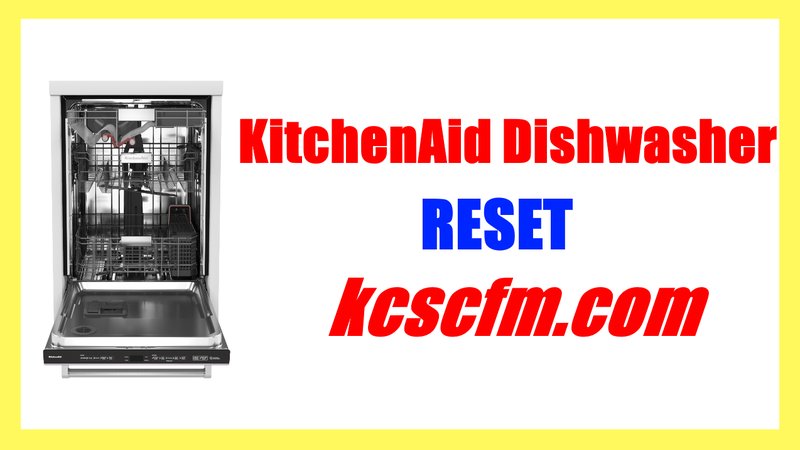
You might be wondering how pressing a few buttons can resolve such seemingly intricate issues. Well, just like how our smartphones occasionally need a reboot to function better, your dishwasher can benefit from a reset. The process often helps refresh the system, clear out temporary software glitches, and sometimes solve the mysterious “SE” error you’re staring at. But is it always the magical fix? Let’s dive deeper into how this all works.
Understanding the “SE” Error Code
The “SE” error code on a KitchenAid dishwasher generally points to issues related to the circuit board or the motor’s sensor, hinting that the machine isn’t receiving the correct information about the washing cycle. Imagine trying to complete a jigsaw puzzle with missing pieces; it would be frustrating, right? That’s how your dishwasher feels when it can’t communicate correctly with its components.
Sometimes, this error can occur due to a temporary glitch, like a power surge, electromagnetic interference, or even software hiccups. Other times, it might stem from more consistent internal problems, like wear and tear on the components or wiring issues. If left unchecked, these minor hitches could escalate into larger problems, akin to ignoring a random rattle in your car that eventually leads to a bigger repair bill.
Understanding the cause is half the battle won. When you spot the “SE” error, take note of what you were doing right before it appeared. Was the dishwasher running a specific cycle? Had there been a recent power outage? These clues can help in determining whether a reset will suffice or if further investigation is necessary.
How to Reset Your KitchenAid Dishwasher
Here’s the deal: resetting your KitchenAid dishwasher is usually a straightforward process, almost akin to rebooting your computer. Begin by switching off the dishwasher and unplugging it from the power source. If accessing the plug is challenging, cutting power at the circuit breaker works just as well. This step is crucial because it allows the dishwasher to completely power down, erasing any temporary glitches plaguing the system.
Wait for about 5 to 10 minutes before plugging the dishwasher back in. You might find this wait reminiscent of letting dough rise, as it gives the appliance time to reset fully. Once plugged back in, switch the machine on and select a basic wash cycle to see if the error code clears. Often, this simple action is enough to resolve the error, much like turning off and on your TV when it acts up.
If the error persists, don’t lose heart. This might just be a sign that the issue runs deeper, potentially involving faulty wiring or a malfunctioning control board. At this point, considering professional help could be the wise next step.
When Resetting Isn’t Enough
So, you’ve reset your dishwasher, and the pesky “SE” code still lingers. What now? Think of this as the universe telling you that your dishwasher needs some extra love. There could be an underlying issue that requires more than just a reset. For instance, if the control board is malfunctioning, it may need a closer inspection or even replacement.
If you’re the DIY type, you might feel tempted to open up the dishwasher and take a look. However, dealing with electrical components can be tricky, like attempting to fix a tangled necklace—you might end up making it worse. It’s usually wiser to have an expert diagnose the issue and possibly repair or replace defective parts.
In some cases, resetting unveils other helpful information. Keep an eye on the dishwasher’s behavior post-reset. Are there any unusual sounds? Does it cycle through properly, or does it immediately flash the “SE” error again? These signs are valuable breadcrumbs leading you toward a more definitive solution.
Preventive Measures to Avoid Error Codes
To avoid repeatedly encountering the “SE” error in the future, regular maintenance is your best friend. Just like you wouldn’t let your car run without oil, your dishwasher deserves routine check-ups. Make sure filters are clean, inspect seals for wear, and ensure that you’re not overloading the machine, which can strain its components unnecessarily.
Routine checks can help you catch small issues before they morph into error codes. For instance, periodically check for signs of rust or blocked spray arms to keep everything operating smoothly. If you live in an area with hard water, consider using a water softener to prevent mineral buildup, which can clog various components over time, much like cholesterol in arteries.
In conclusion, while a reset can occasionally work wonders for clearing an “SE” error, it’s not the ultimate fix for all scenarios. By understanding the code’s implications and knowing when and how to act, you’re arming yourself with the knowledge to maintain your dishwasher effectively. If all else fails, professional help is always a call away, ensuring your KitchenAid dishwasher runs smoothly once again.